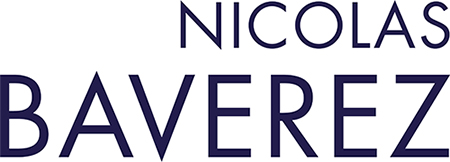The world economies are going through a period of stagflation: high inflation and zero growth. Watch out!
The war in Ukraine has put a sudden stop to hopes for a brilliant recovery following on emergence from the Covid epidemic, rather like the Roaring Twenties that followed the First World War and Spanish flu. This is no longer a time of intensive growth, driven by digital innovation and getting globalization back in running order. It’s a time of stagflation, threatened by the specter of a decade of upheavals and crises – a decade comparable to the 1970s.
After the Yom Kippur war, oil prices quadrupled between September 1973 and January 1974. There was a second oil crisis in 1979 when the price of a barrel tripled following the revolution in Iran. Growth collapsed as inflation took off, causing mass unemployment and a fall in company profit margins, together with the key factor of a deep depression in the financial markets. The oil crises crystallized the imbalances caused by the USA’s expansionist monetary policy designed to finance Lyndon Johnson’s Great Society program and the Vietnam War, as well as by those engendered by the end of the Bretton Woods system with the suspension of dollar convertibility into gold. Rising inflation and unemployment marked the end of the Keynesian era, to the benefit of liberal monetarist policies that produced the framework for globalization.
At present, the world economy is suffering the most violent supply crisis (regarding energy and raw materials) since the very first oil crisis. Price rises are less severe, but just as vast a number of products are affected because they include agricultural products and inputs as well as industrial components. Aside from price rises, standstills in production and the disruption of supply chains, international sanctions and Russian counter-measures are creating major risks of real shortages, particularly in the fields of energy and food.
The effect on the world economy is devastating. Business activity is down in all major areas. In China, some 350 million people were put into lockdown in the name of the disastrous “zero tolerance” strategy. In the USA, the economy shrank in the first quarter by 1.4% and the Fed has prioritized the fight against inflation. In Europe, growth in the Euro zone has been almost zero since the beginning of the year. The emerging nations, with the exception of hydrocarbon producers, have been badly affected by the energy and food crisis as well as by the rising dollar and interest rates. Furthermore, the war in Ukraine, coming after the Covid epidemic – which led to the setting up of expansionist monetary policies at a time which supply was collapsing – has freed inflation, which should reach 6.2% worldwide in 2022. Annual price rises are at 8.5% in the USA, 7.5% in the Euro zone, and 10% in the United Kingdom.
The economy in the 2020s is very different from that of the 1970s. We are less dependent on hydrocarbons. But the violence and the depth of the crisis is similar. Household income and company profit margins are reduced over a long period. There is a clash between, on the one hand, the rise in interest rates and the shrinking of central banks’ balance sheets and, on the other hand, government indebtedness. This is producing the high risk of a financial crisis, particularly in the Euro zone where there is opposition re-emerging between Northern and Southern countries. Lastly, the fall in their profit margins will inevitably mean companies’ cutting down on their investment and their staff.
Stagflation could well bring about the end of globalization in the 2020s, just as it killed off Keynesian regulation in the 1970s. From now on, geopolitics and power struggles between the major powers will dominate. Trade – as well as finance and technology – will re-form around ideological and military blocs. A war economy will reappear in various forms, particularly in the fields of energy and food, and this will rehabilitate state planning. Central banks have become the hostages of public and private indebtedness, and monetary policy is once again at the service of budgetary policy.
Generally speaking, stagflation has many forms. In the United States, inflation is driven by the loop linking salaries and prices against a background of a labor market that is overheating; the resolute line taken by the Fed, which might raise its interest rates by 3% at the end of 2022, is therefore justified. In the Euro zone, the price rises are a result of the soaring costs of energy and raw materials coming from outside. This makes it more difficult to combat, particularly since each member state is in a different situation in terms of its labor market and its dependency on Russia. Because of this, it is very difficult to bring stagflation to a halt without a brutal recession, as happened in the 1980s. Henceforth, it could well provide encouragement to populist forces within democracies like France, whose decline has been the result of its inability to cope with the oil crises of the 1970s. Its mistake then was to have businesses bear the brunt of most of the adjustment needed. The choice we are facing today, of making the state pay the lion’s share of the cost of imported inflation, is no less dangerous – economically, financially and politically.
(Article published in Le Point, 12th May 2022)
